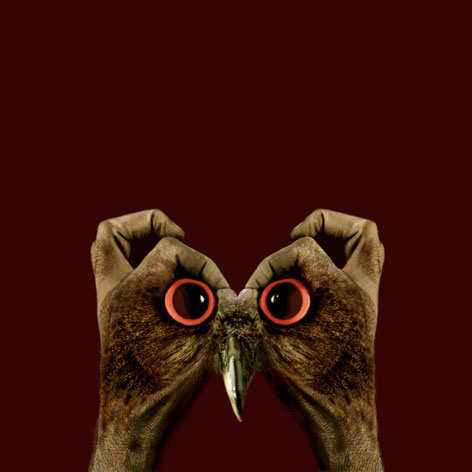Pilar Albajar & Antonio Altarriba, Vitoria, Spain
Pilar Albajar (Huesca, Spain) studied philosophie and photography.
Antonio Altarriba (Zaragoza, Spain) is Professor of French Literature at the University of the Basque Country, writer and scriptwriter, collaborating creating images since 1989.
Fabrications
The hand is our main instrument. No other part of our body gives us such an efficient relation with our ambience. Given unequivocal faith in reality, when all the other senses fail, it offers us that final evidence, definite proof, for the recalcitrant non-believers, that is contact. If I can touch it, it exists…, or, at least it is physically existent. The hand does not limit itself to a testimonial function. It also effects what it touches. It maneuvers, manipulates, drives, handles, ultimately, it fabricates. Our progress has been essentially manual and our thoughts are in a certain way largely determined by our capacity of grabbing and transforming. It can be said that civilization has existed by putting the world at hands reach. We not only do things with our hands but also the hand wakes us. According to how we use it, it defines our relations with other beings. We extend it to greet, we ask for it in marriage, we offer to help, we impose it to heal, we raise it to protest, and we even cut it off to punish. Open or closed, hard or soft, free or restrained, full or empty, dirty or clean, it reflects our situation or our state of mind. It contains the possibility of aggression or caress and can give death or pleasure. From our hands almost certainly come our quirks. In any case, inscribed in the hand are our mannerisms. Our more extreme extremity, the limit where our physical integrity ends keeps the imprint of what it touches; it stores in its digital memory all the forms of the being. This does not feel farfetched that the hand is, together with the face, the most expressive part of the body.
This photographic series exploits the expressivity of the hand and also its versatility. It is overlapped with another referential field that is extraordinarily suggestive, charged with significance and with frequent symbolic connotations that is the animal world. This gives birth to manufactured monstrosities, surprising and at the same time recognizable. But the main challenge of this work consists in creating semantic substrates that gives both the gist and zoology new possibilities of communication.
In this hand bestiary or manual of beasts- can be read some of our main attitudes and actions. From the power or the resistance, to the elegance and patience, you find through this mean a special way of expression. The hand here does not do anything in itself and does not change us. Tells and does not tell, but of course, in its own way.









